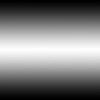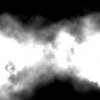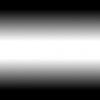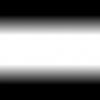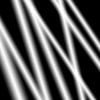Lets examine some lines of thought.
Trees cause forest fires. Damn those trees! If they weren't there there would be no forest fires ever! Lets not blame the source, lets blame that which propagates the flame.
Isn't that, pretty much, the same as saying foil(trees)
causes hot spots(fire)?
Seriously? That doesn't even make sense. How is energy being wasted if
absorbing only a small fraction of the light that falls on them is true? Do you read and
think about what you quote? Do you think the guy who wrote that did?

Almost a fully qualified statement!
Factoring in... bulb type, proximity, angles, light distances traveled ... may burn your foliage.
Well, if you take a mirror, like a hand-held mirror. You can also do it with aluminum foil(shiny side). You can reflect your room's main light(from the ceiling) off the mirror and on to the walls and easily see it(the shape of the mirror, as a light patch). You can not do this with white paint. It certainly will not be a well-defined shape.
Energy is neither created nor destroyed. You can either choose to rapidly accelerate the decay process with diffused surfaces. Or you can choose a highly specular surface, like a mirror or polished metal and not aid the decay process. A diffused light source(omnidirectional) is already creating a diffuse reflection off a mirror surface.
They make these really big pyramid-shaped or cone reflectors, aluminum of course.
http://images.google.com/images?ndsp=20&hl=en&safe=off&client=opera&rls=en&um=1&q=grow+plant+reflector&start=0&sa=N
Just lots and lots of metallic reflectors. Most are smooth & flat.
That middle reflector really reminds me of crinkled aluminum foil.

so what are you saying mirrors do not make hot spots in a grow room? or do you recomend using mirrors to line your walls with?



Hot Spot
You can focus the invisible light from an electric heater.
Infrared radiation from an electric heater is just another "color" of light. Though you can't see this light with your eyes, you can focus it with a mirror or a lens and feel the warmth it produces on the back of your hand. From this Snack, you can also learn how parabolic shapes concentrate energy.
- A large concave mirror, 16 inches (40 cm) in diameter (available for about $40 from Sargent-Welch, P.O. Box 1026, Skokie, IL 60076-8026).
- A small electric heater.
- Adult help.
(15 minutes or less)
Place the heater many focal lengths away from the mirror. (The focal length for the recommended mirror is about 1 foot [30 cm], so place the heater about 10 feet [3 m] away.)
(15 minutes or more)
Move your hand around in front of the mirror until you can feel the hot spot. This spot will be close to the mirror's focal point.
Look into the mirror and find the visible image of the heater: This image of the heater is also near the focal point.
Look into the mirror and move around, observing your reflection. Move forward and backward in front of the mirror, and see how your image and the images of the objects around you change.
Move the heater off the axis of the mirror or closer to the mirror. Search around, using the back of one hand as an infraredradiation detector. Find where the infrared radiation from the heater is concentrated. This will be the position of the infrared image of the heater. Locate the visible-light image of the heater with your eyes. Notice that the infrared energy from the heater comes back together at the visible-light image position. Notice also that the image point is not the focal point.
Place your face close to the mirror and talk into the mirror. Keep talking as you move away from the mirror. At one point, your voice will sound much louder. At this point, the sound waves radiating from your mouth bounce off the mirror and are concentrated at your ears. When this happens, the mirror is making a sound image of your voice at the position of your ears.
Every parabolic mirror has a
focal point, a place where all parallel light waves, sound waves, or any other form of radiation directed at the mirror along its axis will be concentrated. Infrared radiation is simply light with a wavelength too long for your eyes to see. But your skin can feel infrared radiation as heat. The skin of your cheek and on the back of each of your hands is particularly sensitive to warming by infrared radiation. The parabolic mirror concentrates the infrared radiation coming from a distant heater at its focal point. That's why you feel a hot spot when you put your hand at the mirror's focal point.
When the heater is moved closer to the mirror, the point where its radiation is concentrated, the
infrared image of the heater, moves away from the focal point.
Satellite dishes for TV reception operate on this same principle, except that they focus radio waves instead of light waves. The surface of such a reflector doesn't need to be polished like the parabolic mirror because radio waves are much longer than light waves. To a radio wave, the surface of the dish looks very smooth: Its small irregularities don't affect the long radio waves. The very short light waves, on the other hand, are bounced off in all directions by the radio dish's surface roughness, so light waves are not focused. For reasons of economy and weight, the large dishes used to focus the even longer radio waves from astronomical objects (stars, quasars, etc.) sometimes are constructed out of a rather large mesh screen, which appears smooth to the very long waves.
A family of snakes called
pit vipers, which includes rattlesnakes, has two or more sensory "pits," which they use like pinhole cameras to image infrared light. The snake can then locate a warm-blooded creature, such as a mouse, by imaging the infrared heat radiated by the mouse. With two pits, the snake even has some depth perception in the infrared.

 i had a room almost perfectly smooth... 4 hours later it looked like crap. Next time i will go with Panda Plastic. Good luck, man... it's an impossible mission. But, yah, the flatter the better.
i had a room almost perfectly smooth... 4 hours later it looked like crap. Next time i will go with Panda Plastic. Good luck, man... it's an impossible mission. But, yah, the flatter the better.